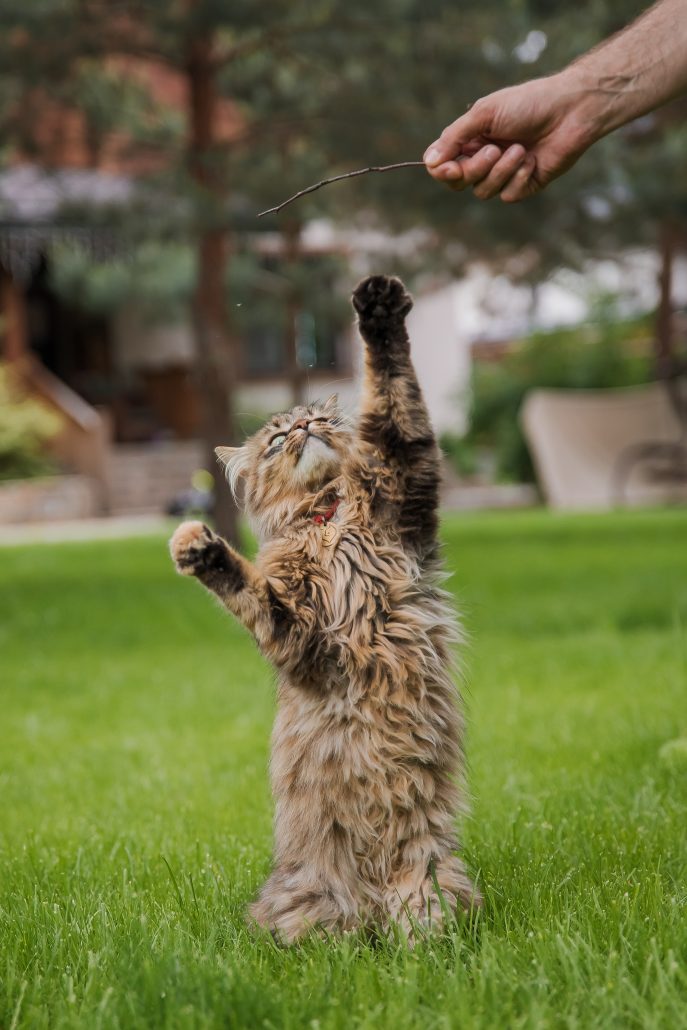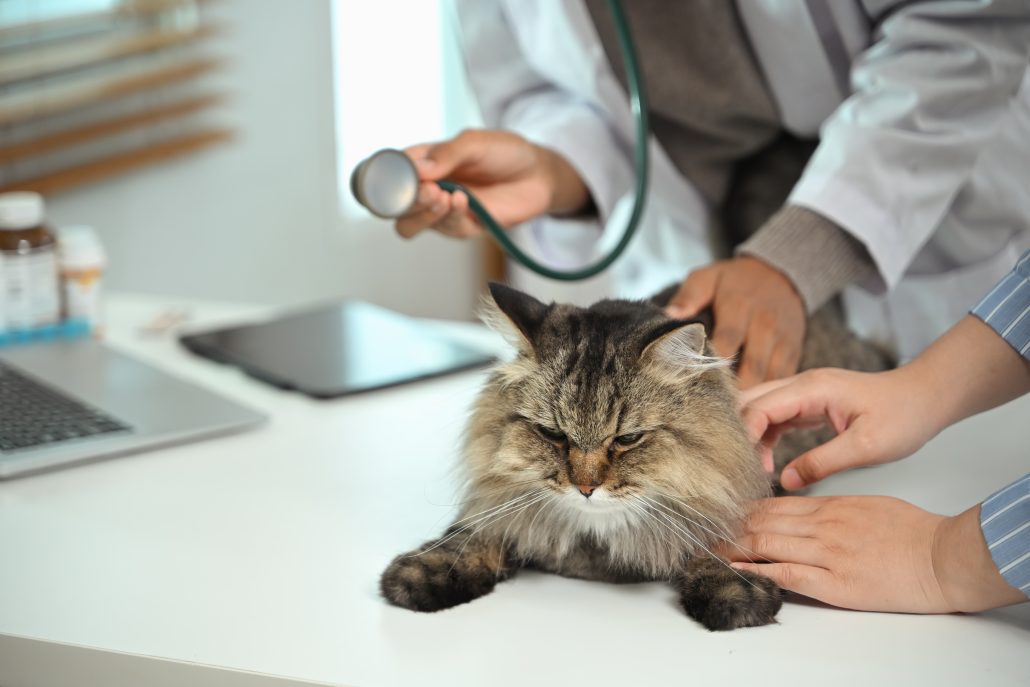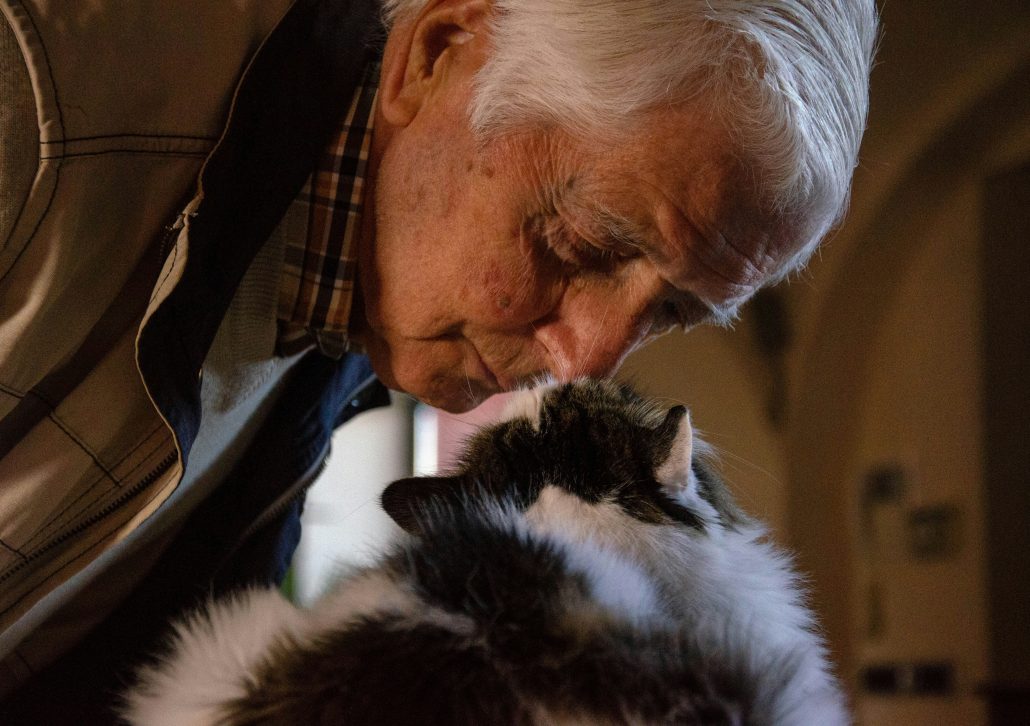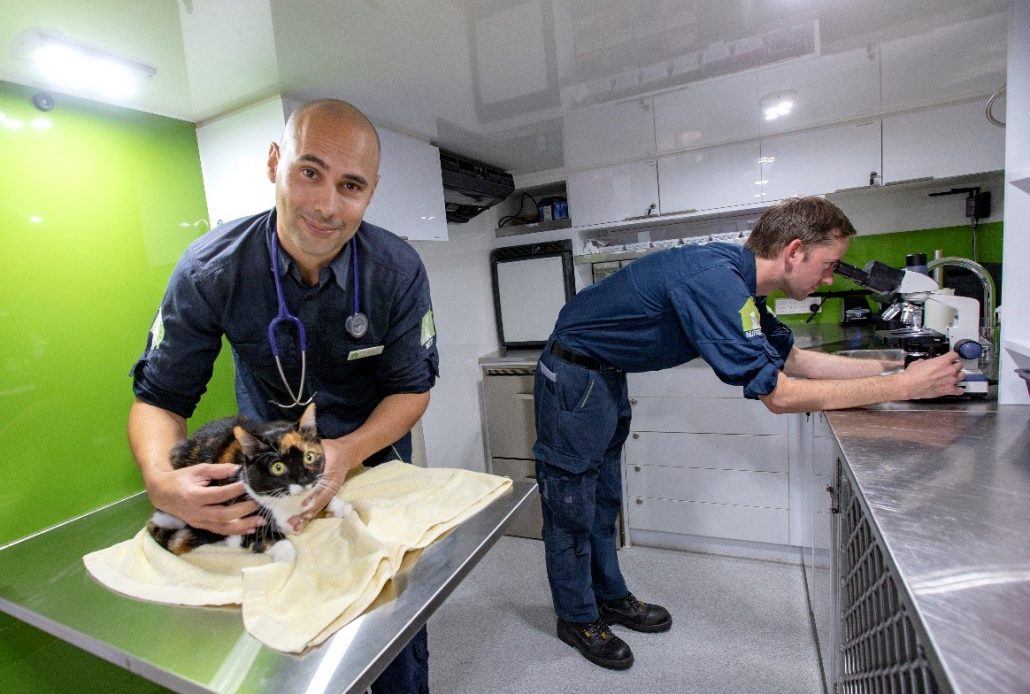
High blood pressure in cats might not be something you think about often, but it’s a serious condition that can impact your cat’s health in significant ways. While it might sound like a condition reserved for humans, cats can experience hypertension too, and it’s important to be aware of what this means for their health.
But don’t worry! With the right knowledge and care, hypertension in cats can be effectively managed, helping your kitty live a happy and healthy life. In this post, we’ll walk you through what hypertension is, how to spot the signs, and the best ways to manage and treat it.
What Is Feline Hypertension?
In simple terms, hypertension in cats occurs when their blood pressure rises above normal, safe levels. This extra pressure puts stress on various parts of their body, like the heart, kidneys, eyes, and nervous system. Feline hypertension is fairly common, especially in older cats. It can also be a complication of other underlying medical conditions, such as kidney disease or hyperthyroidism.
Here’s how it works:
When your cat’s heart beats, it pushes blood throughout the body, putting pressure on the walls of the arteries. This is called systolic blood pressure (SBP), and is the top number you might see on a blood pressure reading. When the heart relaxes and fills with blood, the pressure on the artery walls is called diastolic blood pressure (DBP), which is the bottom number. In cats, the SBP (or top number) is the most crucial number for diagnosing hypertension.
Two Types Of Hypertension
When it comes to hypertension in cats, there are two main types – primary and secondary hypertension. Each has its own causes and implications, so understanding the difference can help in managing your cat’s health effectively.
Primary Hypertension
Primary hypertension is quite rare in cats. In these cases, elevated blood pressure occurs without any obvious underlying cause. While some medications can cause a temporary rise in blood pressure, these are not typically the main reason for persistent hypertension. Most of the time, if a cat has high blood pressure, it’s likely a symptom of an underlying condition.
Secondary Hypertension
On the other hand, secondary hypertension is far more common and is usually a complication of another medical condition. Here are some of the most common conditions that can lead to secondary hypertension in cats:
- Chronic Kidney Disease: This is the most common cause of secondary hypertension in cats. The kidneys play a key role in regulating blood pressure, and when they’re not functioning properly, it can lead to high blood pressure.
- Hyperthyroidism: An overactive thyroid gland can cause various health issues, including elevated blood pressure.

The Effects Of Hypertension In Cats
Hypertension in cats is not something to be taken lightly. If left untreated, high blood pressure can lead to a range of serious health issues affecting various parts of your cat’s body.
Eyes: High blood pressure can cause a range of eye problems for your cat. It can lead to bleeding in the retina, swelling, or even cause the retina to detach from the back of the eye. These issues can affect your cat’s vision, potentially leading to reduced sight or even blindness.
Brain and Nervous System: High blood pressure can also cause bleeding in the brain, which might lead to changes in behaviour, trouble with balance, or even seizures. In more severe cases, it can cause symptoms similar to dementia or, in extreme cases, a coma.
Heart: Over time, persistent high blood pressure can affect your cat’s heart. It can lead to congestive heart failure due to the thickening of the heart tissues. Cats with this condition might show signs like breathlessness or a lack of energy.
Kidneys: High blood pressure puts extra strain on the kidneys, which can be especially concerning if your cat already has kidney issues. Over time, it can lead to limited kidney function or even kidney failure.
Signs & Symptoms Of Feline Hypertension
Spotting hypertension in cats early is key to reducing the damage high blood pressure can cause to their organs. However, symptoms are subtle, and hypertension may not show obvious signs until damage has already occurred. This makes routine vet check-ups and screenings especially important.
Changes in Behaviour
One of the first indicators that something might be wrong with your cat is a change in their behaviour. Cats are often quite good at hiding their discomfort, so any shifts in their normal routines or habits should be taken seriously. Pay attention if your cat seems more withdrawn, less playful, or unusually irritable. These subtle changes can sometimes be the only sign that something is wrong.
Eye Problems
Eye issues are often among the first visible signs of hypertension in cats.
- Pupils that are unusually large and unresponsive to light
- Blood in the Clear Chamber of the Eye
- Your cat seems disoriented or is having trouble navigating around the house,
- A sudden loss of vision
Brain & Nervous System Issues
Hypertension can also impact your cat’s brain and nervous system, leading to symptoms such as:
- Changes in how your cat acts, like increased aggression or confusion.
- They are lost or unsure of their surroundings
- A noticeable drop in your cat’s usual activity level or a lack of interest in things they normally enjoy
- Seizures
Kidney Damage
For cats with existing kidney issues, high blood pressure can exacerbate the problem. Watch for these signs:
- A drop in your cat’s interest in food
- Frequent vomiting
- Unexplained weight loss
- Unusually tired or inactive
- Drinking more water than usual
- Frequent trips to the litter box

Diagnosing High Blood Pressure In Cats
As cats age, they become more susceptible to high blood pressure, making regular monitoring increasingly important. For cats around 7 years old and older, it’s a good idea to include blood pressure checks as part of their routine vet visits.
Diagnosing high blood pressure in cats is straightforward and non-invasive. The process is similar to what you might experience during a human check-up. An inflatable cuff is placed around one of your cat’s legs or the base of their tail. In addition to measuring blood pressure, your cat’s vet may also perform an eye examination. This is because high blood pressure can lead to changes in the eyes, such as bleeding or swelling.
But, what do the numbers mean?
A cat is typically diagnosed with hypertension if their systolic blood pressure (SBP) is greater than 160 mm Hg. However, even if the SBP is just above 150 mm Hg, there is a risk of organ damage.
How Is Hypertension in Cats Treated?
Treating hypertension in cats involves addressing both the high blood pressure itself and any underlying conditions that may be contributing to it.
For most cats, managing hypertension involves the use of oral medications designed to lower blood pressure. If your cat has trouble taking pills, ask your cat’s vet if the medication can be compounded into a liquid form, which might be easier to administer.
In addition to medication, managing your cat’s diet can play a role in controlling hypertension. Your vet may recommend specific lifestyle or dietary changes or supplements to support your cat’s overall health and help manage their blood pressure.
In cases where hypertension is a symptom of an underlying condition such as kidney disease or hyperthyroidism, your vet will treat the root cause as well and they symptoms.

Keep Your Cat’s Heart Healthy
Hypertension in cats might not always show up with obvious signs, but understanding and managing it is key to ensuring your feline friend stays healthy and happy. By being vigilant about changes in your cat’s behavior and working closely with your vet, you can catch and address high blood pressure early, before it leads to more serious health issues.
If you suspect that your cat might be suffering from hypertension or if it’s been a while since their last check-up, don’t wait—contact us today. Our team at The House Call Vet is here to provide comprehensive care and support to keep your cat’s heart—and their whole body—healthy.

